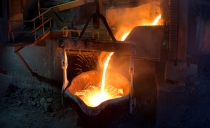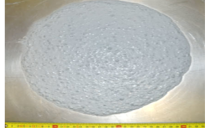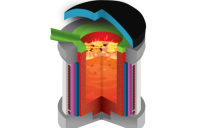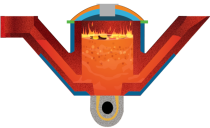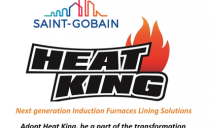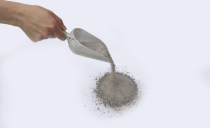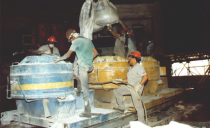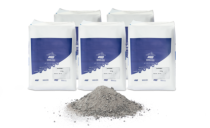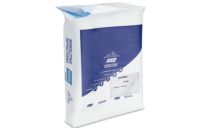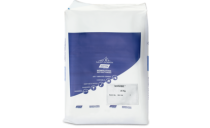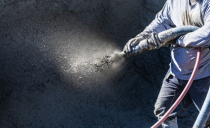spécifications
NORFLOW® Self-Flow Castables are engineered for easy installation. Customers simply need to prepare their mix and pour into the work area. The product will flow automatically into all zones without needing tools like vibrators. Self-flow castables suit a range of specific areas, such as coil grout in coreless induction furnaces and working linings for inductors, ladles, pouring furnaces, and more. They come in various compositions to suit specific melt chemistries, ensuring superior performance in high-temperature and erosive environments.
| Zone d'équipement | Nom du produit | Métal | Analyse chimique | |||
| Fer (I), Acier (S), Cuivre / Laiton (CB), Zinc (Zn), Aluminium (AL) | Al2O3 % | SiO2 % | MgO % | SiC % | ||
| Enduit en bobine | DÉBIT A 337 | I/S/CB/Zn/AL | 92 | 1 | ||
| Doublure de travail | DÉBIT A 1167 | I | 87 | 8 | ||
FAQ
Are NORFLOW® Self-Flow Castables suitable for ladle relining?
Many customers using ladles have already switched to NORFLOW® castables – particularly NORFLOW® 973 - citing ease of installation and increased performance in ladle applications.
What are NORFLOW® Self-Flow Castables?
NORFLOW® Self-Flow Castables are advanced refractory materials designed for easy installation in high-temperature applications, providing thermal shock resistance, high mechanical strength, and outstanding durability.
Where are self-flow castables used?
Self-flow castables are used in coreless induction furnaces, ladles, pouring furnaces, and aluminium production to enhance performance, reduce downtime, and ensure longevity.
Étude de cas
Contenu Similaire
Fonderie
Saint-Gobain Performance Ceramics & Refractories s'appuie sur une large expertise afin de fournir des solutions réfractaires innovantes et fiables pour...
Amélioration des performances du revêtement réfractaire de la poche de...
L'optimisation des temps d'arrêt des équipements et un calendrier de maintenance clair et prévisible améliorent encore le succès des opérations de coulée.
Four induction à creuset
Le vaste portefeuille de solutions pour les fours induction à creuset de Saint-Gobain Performance Ceramics & Refractories permet sans nul doute aux clients...
Inducteur
La zone de l'inducteur est un élément clef de l'installation et de la performance du four. Saint-Gobain Performance Ceramics & Refractories propose une...
Poche de Transfert & Autres
Saint-Gobain Performance Ceramics & Refractories propose un certain nombre de solutions conçues pour assurer la sécurité, l'efficacité et la facilité d...
Four de Coulée
Saint-Gobain Performance Ceramics & Refractories propose des solutions pour une large gamme de fours de coulée et de maintien, en tenant compte de facteurs...
Matériaux Préconisés
HeatKing™ revêtement monolithique
Les produits réfractaires HeatKing™ sont conçues pour être utilisée dans des conditions d'exploitation extrêmes; offrant des performances accrues tout en...
NORVIBE™ Ciments secs vibrés
Les ciments secs vibrés NORVIBE™ sont conçus pour une facilité d'installation, une durée de vie exceptionnelle et une résistance optimale à la corrosion...
NORCAST® Bétons réfractaires
La gamme de bétons NORCAST™ a été conçue pour offrir une installation facile, un temps de prise optimisé et une durée de vie exceptionnelle dans des...
NORTOP™ Mélanges pour partie superieure des fours
La gamme complète de mélanges NORTOP™ de Saint-Gobain Performance Ceramics & Refractories est conçue pour être utilisée pour la partie supérieure du...
Mélanges de ciment NORCOIL™
La gamme de mélanges de ciment pour revêtement NORCOIL™ est spécifiquement conçue pour protéger la bobine dans les fours induction à creuset.
NORRAM™ Masses à damer
La gamme NORRAM™ composée de mélanges à damer humides et secs particulierement adaptée à la réparation d'un large éventail d'applications de fusion et pour...
NORSHAPE™ Matériaux Préformés
La gamme NORSHAPE™ de Saint-Gobain Performance Ceramics & Refractories intègre un certain nombre de solutions de produits réfractaires préformés et de...
NORSHOT™ Mélanges à projeter
La gamme de mélanges à projeter NORSHOT™ présente des systèmes de liaison optimisés pour réduire le rebond et améliorer l'adhérence pendant l'installation.


